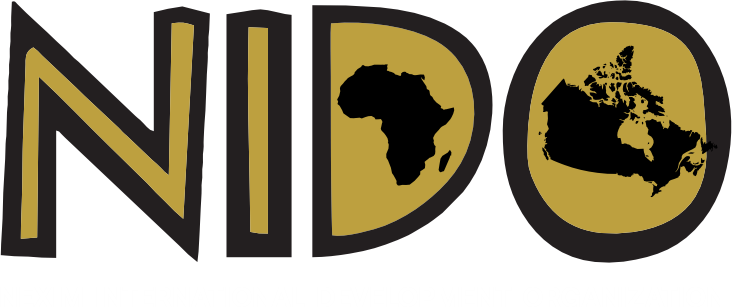History of Uganda
The Republic of Uganda also known as “The Pearl of Africa” is a landlocked country in East Africa. It is bordered by Kenya to the East, The Republic South Sudan to the North, The Democratic Republic of the Congoto the West, Rwanda to the South West, and Tanzania to the South. The southern part of the country includes a substantial portion of Lake Victoria, which is also bordered by Kenya and Tanzania.
Uganda takes its name from the Buganda kingdom, which encompassed a portion of the south of the country including the capital Kampala. The people of Uganda were hunter-gatherers 1,700 to 2,300 years ago, when Bantu-speaking populations migrated to the southern parts of the country.
Uganda was home to many different peoples, tribes, and ethnicities, each bringing their unique cultures and models of social organization to the region. While there is now a central government and various administrative districts, the four traditional kingdoms of the region survive today.
The United Kingdom placed the area under the charter of the British East Africa Company in 1888 and governed the area throughout the colonial period. The protectorate of Uganda and the borders we recognize today took shape in 1914.
Uganda gained independence from Britain on 9 October 1962. The official languages are English and Swahili, although multiple languages are spoken in the country.
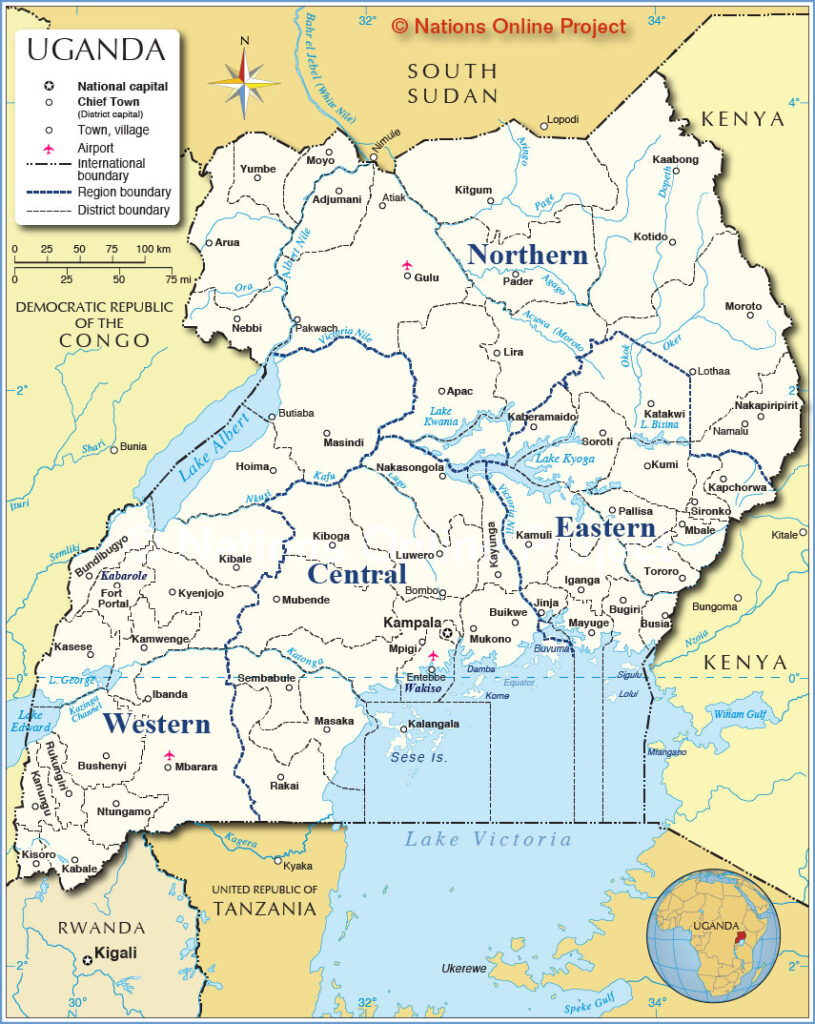
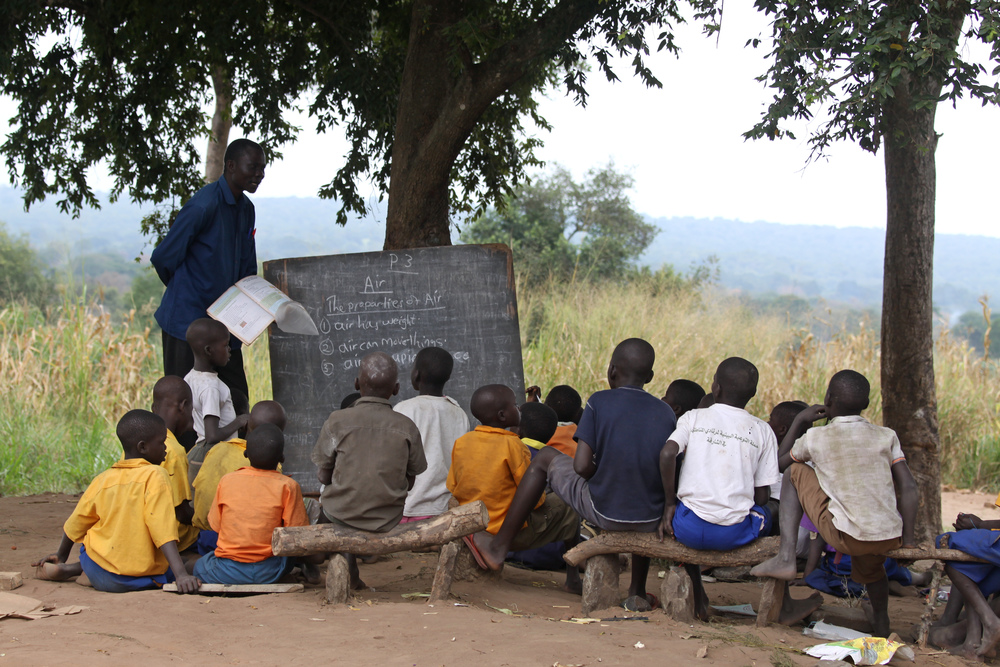
Our challenge.
Due to 20 years of civil war between the Lord’s Resistance Army and the Ugandan Army (UPDF), the North and North East of Uganda lags behind in GDP, literacy and life expectancy – 68%, 25% and 6 years respectively. Despite increasing enrollment in free Universal Primary Education and Universal Secondary Education programs in Uganda, many children are unable to get an education because the basic infrastructure is not in place and classrooms are overcrowded. Hundreds of students are studying under trees or collapsing buildings or have no shelter at all. These communities simply cannot afford to build schools on their own, and this is why NIDO is helping.
Uganda: the pearl of Africa
A number of different ethnic groups, speaking around fifty different languages, live in Uganda. While English is the official language, Luganda, a language in the Bantu family, is the most widely spoken, particularly among people in the southwest of the country. Many people in the northeast of Uganda speak Swahili, adopted as an official language in 2005. (Bantu languages, and other branches of the Niger-Congo language family, are spoken by Africans all over Sub-Saharan Africa, from West to East).
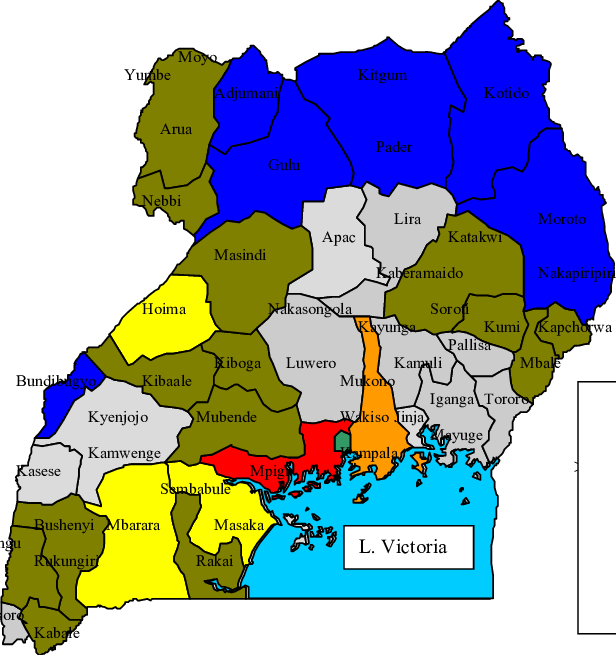
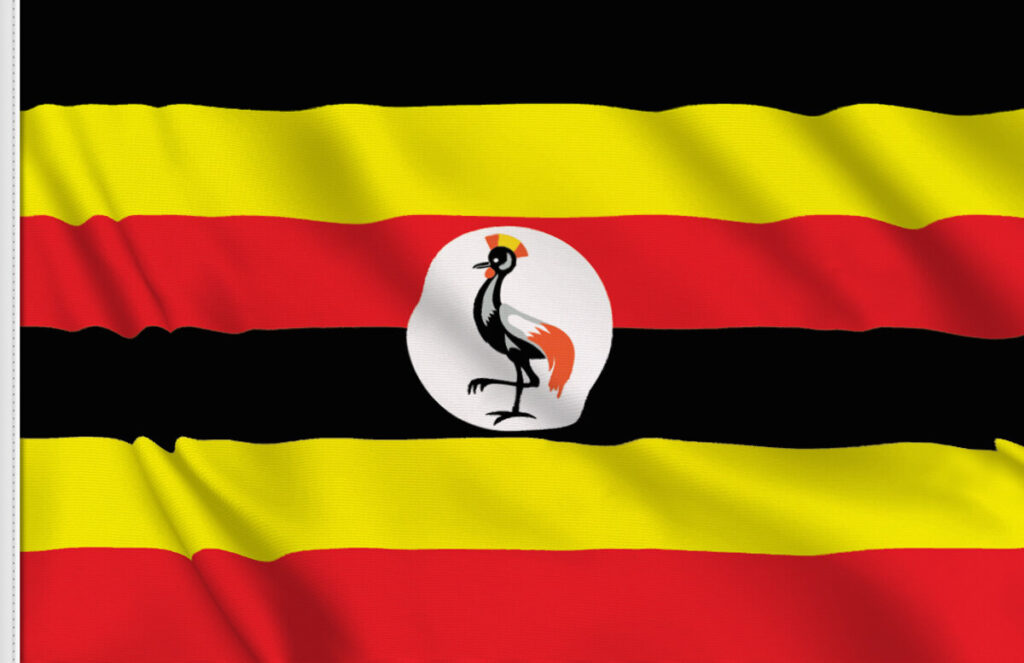
Uganda Flag and its meaning
From the top, a total of six horizontal stripes of black, yellow, red, black, yellow, red.
- Black symbolizes African heritage and Uganda’s fertile soil.
- Yellow is for the glorious sunny days, so characteristic of Uganda.
- Red symbolizes the red blood that runs in our veins, forming a common bond to all humankind.
- The majestic crested crane (Regulorum gibbericeps) is Uganda’s National Bird.

